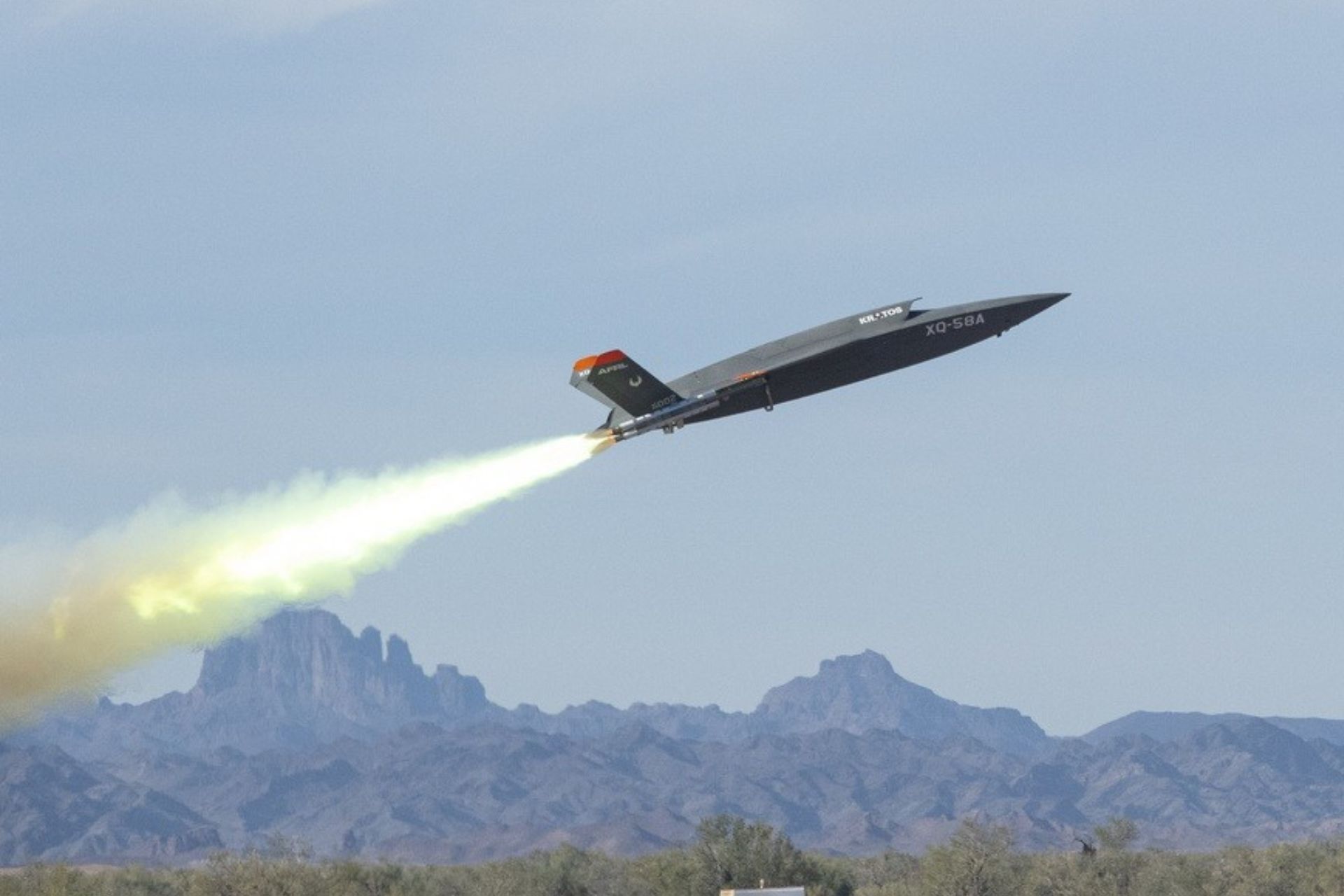Breaking News
U.S. military prioritizes AI-powered drones in defense modernization.
A new era in defense is emerging, marked by the rise of AI-powered military drones capable of operating without human intervention. This technological development is attracting increasing interest from the U.S. government, which is dedicating significant funds to it. Unmanned systems, including platforms operating autonomously or remotely in the air, on land, at sea, and in space, have become a priority for the U.S. Department of Defense (DoD). This shift is driven by the increase in global conflicts, the rise of AI technologies, and ongoing security efforts in the Indo-Pacific region, according to Andre Madrid, vice president and analyst at BTIG.
Follow Army Recognition on Google News at this link

An XQ-58A Valkyrie low-cost unmanned aerial vehicle launches at the U.S. Army Yuma Proving Ground, Ariz., Dec. 9, 2020 (Picture source: US DoD)
The DoD is currently undergoing a generational transformation of its unmanned fleets. Recent conflicts in Nagorno-Karabakh, Ukraine, and the Middle East have demonstrated the significant impact of these systems, which are not limited to aerial drones. Despite attention on both high-tech and low-tech systems, much of the funding is directed toward production programs. According to BTIG, the DoD requested $5.3 billion for unmanned systems in fiscal year 2025, with projected annual funding growth of 9.5% through 2029. Most of these requests come from the Collaborative Combat Aircraft (CCA) program, part of the U.S. Air Force's Next Generation Air Dominance initiative aimed at maintaining U.S. air superiority in future conflicts.
The CCA program aims to develop a new generation of lower-cost, AI-enabled unmanned combat aerial vehicles (UCAVs) that would collaborate with manned fighter jets to enhance their capabilities. Currently, the U.S. Navy is the largest recipient of DoD funding for unmanned systems, particularly for aerial drones and unmanned surface vessels. However, the U.S. Air Force is expected to see the highest growth in funding over the next five years. The Pentagon projects that Air Force funding for unmanned systems will grow at an annual rate of 34% between fiscal years 2024 and 2029, driven entirely by the CCA program.
The DoD is actively exploring how to leverage unmanned technology and autonomy to accomplish more missions in the near future. Traditionally, the DoD has not procured software on such a large scale, but this approach is evolving with the rise of autonomous systems. This shift in technology acquisition could significantly transform the defense landscape.
Several companies stand to benefit from the increased spending on unmanned systems, according to BTIG. These include AeroVironment, General Dynamics, Kratos Defense & Security Solutions, Northrop Grumman, and Lockheed Martin. Other analysts, such as Kristine Liwag from Morgan Stanley, have also become more optimistic about the broader defense sector, despite its underperformance last year due to supply chain and inflation concerns, as well as fears of a slowdown in U.S. defense spending.
Northrop Grumman, one of the leading American weapons manufacturers, is positioned to benefit from the DoD's renewed focus. With its expertise in unmanned aerial systems, Northrop could gain from the CCA program if the U.S. Air Force integrates these new UCAVs with Northrop's B-21 Raider stealth bomber. Northrop is also a contender for future production contracts under the program. Additionally, the company has a strong presence in the unmanned systems domain with products such as the MQ-4C Triton, a high-altitude, long-endurance unmanned aerial vehicle used by the U.S. Navy, and the RQ-4 Global Hawk, operated by the U.S. Air Force.
While Northrop is a more diversified option, AeroVironment is considered a pure player in the military drone market. The company dominates this sector, particularly among publicly traded firms, due to its growing international orders for Switchblade drones, widely used by countries such as Ukraine and France, as well as other U.S. allies.
Kratos, on the other hand, derives about 20% of its business from unmanned systems, primarily target drones, with the rest focused on microwave electronics, rocket testing, space training, and other markets. However, recent developments, such as the contracting of its Apollo drone and the anticipated contract for its Athena drone, could strengthen Kratos' position in the unmanned domain. The company has also been operating the Valkyrie XQ-58A, an AI-enabled combat drone, since 2019 and has expressed interest in competing for future CCA contracts.
General Dynamics could also benefit from increased spending on unmanned systems, with a product portfolio that includes small and medium unmanned undersea vehicles, unmanned S-MET ground vehicles for the U.S. Army, and littoral combat ships for the U.S. Navy. Last year, the DoD awarded multi-million dollar contracts to General Dynamics, Lockheed Martin, and Northrop Grumman to support aspects of the Navy's littoral combat ship fleet. Morgan Stanley shares this optimism about General Dynamics, citing growing demand for its defense products, including ammunition and ground vehicles, as an indicator of potential earnings growth.
In conclusion, the rise of AI and autonomous systems in the military sector is creating new opportunities for several defense companies amid ongoing geopolitical tensions.


























